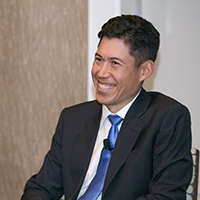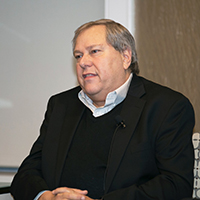Why TPG ‘Clicked’ with EnvisionRx
The founder of EnvisionRx and a partner at TPG—which invested in the company and ultimately exited via a $2B sale to Rite Aid—discuss how they partnered to disrupt the pharmacy benefits management space
David Snow, Privcap: Jeff, how did you get the opportunity to invest in EnvisionRx? What did you like about the team and the platform?

Jeff Rhodes, TPG Capital: We were very focused on PBM (pharmacy benefits management) for a number of years and met a lot of the market participants. While we saw there was an opportunity for change…it didn’t feel to us that any of the companies we were meeting with had the go-to-market approach or the mindset among the leadership team to try and take advantage of that opportunity. But then we heard about this business, EnvisionRx, through a mutual friend and managed to finagle a meeting, and it just sort of clicked.
The way that they were thinking about building their business made a ton of sense to us. One of the things that we like about the pharmacy supply chain and PBM in particular—one of the reasons we’ve spent so much time in it—is that it’s probably one of the most complex areas of healthcare services. Traditionally, it’s been one of the most opaque. The opportunity for an entrepreneurial team that expresses a different level of creativity and, frankly, hard work to do things quickly, is extraordinary. That was what we picked up on the first time we met Barry and his team.
Barry, at the time that you were looking for partners, you probably had many different suitors from many different private equity firms. What did you like about the TPG team and their approach?
Barry Katz, EnvisionRx: We had spoken to other private equity [firms] and they were very interested in numbers, what our plans were, and how we saw growth. TPG was interested in all of those things too, but what TPG was more interested in was our culture. I remember Jeff holding up our mission statement, saying, “This is what makes this company. This is what’s important to us.” That was a revelation to us, because we built a company that was our family. TPG was there to help us do creative things. All of those things just felt natural with them, and I think that’s why we clicked. We’ve been friends ever since.
How did you structure the deal so it worked for everyone?
Rhodes: After the TPG investment, the founders maintained a significant minority position in the business. That’s neither a passive minority nor a heads-up partner, so it’s sort of unnatural. We talked a lot about that at the time, and we decided there was a common bond of trust. We knew that we were going to be able to figure out difficult decisions along the way, including an understanding from day one that we would all go and hire a CEO together, that we would have to figure out when we would seek final liquidity for the investment together—all those things that have inherent tension, we knew we would go into them with this in-between ownership structure.
Barry, for those of us who are less familiar with the PBM market, what did it look like in the old days of “business-as-usual,” and what was your idea to disrupt it?

Katz: We were in the pharmacy benefits management business, working for health plans, and we saw there was a lot of opacity. The way it was, the pharmacy contracts had “spread,” meaning they were negotiated at one rate, but they were charging another rate to the client. There were pharmacy rebates, which were a big source of revenue, and the PBMs were either keeping all of that money or they were keeping part of it. But they were sharing that information in such an opaque way that nobody knew exactly what the PBMs were keeping.
When we went into the business, we knew we needed to do something different, because the three large players at the time—now there’s only two—were about 80 percent of the business. So, we were looking at taking business away from them or the remaining 20 percent of the market. We needed to come out with a more disruptive model … doing everything that they didn’t do.
Jeff, how did you think about the right structure and timing for the exit?
Rhodes: When we got to the point when we were ready to exit, Barry and his co-founders had the mindset that the business was almost like a child, and they were thinking about the right long-term home for it. I think what was particularly attractive to them, because they had this mindset, was that they were going to become the pharmacy benefits platform for all of Rite Aid, in the same way that Caremark is for CVS. Now, the best laid plans don’t always turn out the way you expect … because then Rite Aid was acquired by Walgreens six months later. But the way we thought about selling the business was motivated by the team’s mindset, and we all felt good about the result.
The founder of EnvisionRx and a partner at TPG discuss how they partnered to disrupt the pharmacy benefits management space